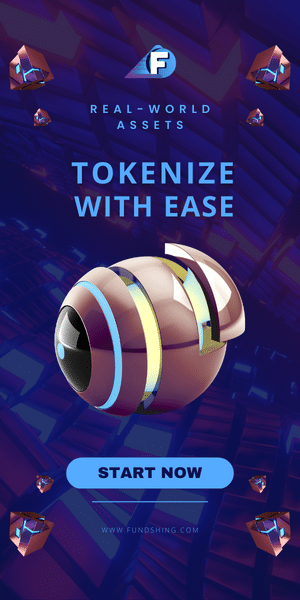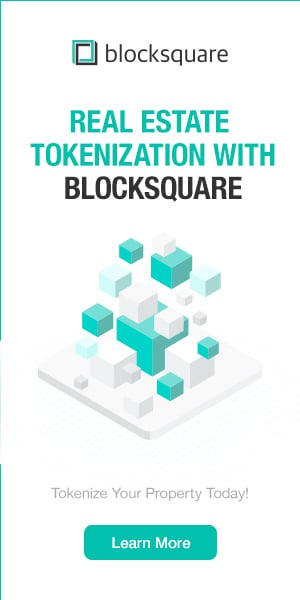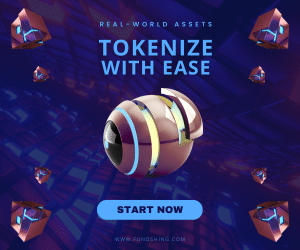– an interview with William Entriken, the lead author of the ERC-721 standard, PART 1
American William Entriken is the lead author of the ERC-721 standard and the creator of Su Squares. In this interview, he explains how the ERC-721 standard came about and the difference between the ERC-20 standard and the ERC-721 standard. Moreover, he describes how an ERC-721 token can “own” a series of ERC-20 tokens, and he elaborates on some of the obstacles that exist for the ERC-721 standard to be adopted by the mainstream. This is the first part of The Tokenizer’s extensive interview with Willian Entriken. The second part will focus on art as a use case for the ERC-721 standard.
By Jonas Kasper Jensen & Michael Juul Rugaard
The Tokenizer (TT): How did you get the idea for the ERC-721 standard, and what is the problem that it solves?
William Entriken (WE): The idea came from Dieter Shirley at Cryptokitties. He had this incredible new asset class that he wanted to sell, and the amazing thing is that in addition to making the product he and the studio Axiom Zen even made the marketplace for it. So, you can buy Cryptokitties on the Axiom Zen website, and you can sell them and breed them all on the same website. So, Dieter didn’t really need to make any standard, but he started the idea. The whole point of the standard is to interoperate different marketplaces with different assets, so it was very generous that he even wanted to do that. That’s where the idea came from.
TT: So Cryptokitties is one use case. But what are ERC-721 tokens good for besides this particular case?
WE: Well, back in 2018 everybody was focused on raising money and finding the next big thing. For the people involved in the industry, when they thought about the next big thing, they meant pictures of dogs, pictures of rabbits e.c.t. Security tokens did not exist yet. That craze didn’t exist. We barely had anything legal related to trading any crypto assets. That was still being set up.
That’s the scene for this story, so everybody’s saying, “Okay, well, we need to track pictures of cats, pictures of dogs, pictures of raccoons.” And my contribution here was to say let’s think beyond pictures of animals. Let’s think about tracking identity. Let’s think about tracking physical assets. Let’s think about tracking securable assets, securities, but not fungible securities. Let’s think about tracking houses and cars.
How do you track these things? I’m not saying that we ever will track them using blockchain, but this is a use case study, so when you’re doing a standard, you need to have a very strong use case study about what is in the scope of the problems you want to solve. Those are the problems we’ve identified. Luckily, the community had an appetite for solving all these problems, and the standard was designed in such a way that it worked with all these.
TT: So, you were the person to collect all these ideas and put them into a standard?
WE: Yes, lots of phone calls. So, I’m the lead author of the standard. Basically, what I did was that I stole everybody’s ideas, and when I had enough, I made sure that they all were compatible into one standard.
The difference between ERC-721 and ERC-20
TT: How is the ERC-721 standard for non-fungible tokens related to the ERC-20 standard for fungible tokens?
WE: ERC-20s are tokens or coins. These coins are things you spend. They can represent shares in a company or voting rights, basically anything you could trade on a stock market, that’s ERC-20.
ERC-721 are specific assets. The original name of it was deeds which represent a title in something. However, people prefer the word non-fungible tokens. So, the ERC-721 is called deeds or non-fungible tokens. Your house has a deed. When you talk to somebody, you don’t say I’m going to give you three houses, and you are giving me two houses. That’s not how we talk about houses. Every house is unique, and they’re different. The deeds for these houses, that’s what the 721s are.
ERC-721 owing ERC-20 tokens
TT: But if you are tokenizing for instance a skyscraper in Manhattan and you want to split it into hundreds of fractions, are those fractions then also represented by non-fungible ERC-721 tokens?
WE: Nope, so let’s talk about the real world, where we won’t need to worry about any ledgers or cryptography. How do you fractionally own a property? You said a skyscraper in New York, so let’s take a specific skyscraper like PlayStation Theater. PlayStation Theater has got a nice hall downstairs, and some space upstairs. Let’s say there’s a bunch of investors who are going to own that building jointly, so the investors will all have shares in the building. However, all the property in New York City will be registered in the “City of New York, Offices of the City Register”. There’s literally a title, and they literally hold them in paper format.
When you walk into the building, you will not see fractional ownership on this piece of paper. You will not see a list of owner A, owner B, owner C. Every time you buy ownership into this company, they will not register that in the property management office. What do they register? There will be one holding company, and they probably call it PlayStation Theater Holding Company. And if they buy another building too, they’ll have a separate company for that, so that the assets are not commingled. So that company will have ownership of that building. And that company will be registered in the building registration office. Thus, the answer is that the ERC-721 token will have a single owner every time.
TT: So, you kind of have one ERC-721 token that can be sold in fractions, which are then represented by ERC-20 tokens?
WE: Yes.
Obstacles in adoption
TT: What are the primary obstacles for this to happen and for the full potential of this to be realized?
WE: There are some barriers. One of them is the fact that the network we’re using is quote “three months away from being able to scale.” We keep saying, Ethereum Two is going to solve all problems, or these other networks were going to just come out of nowhere. So, the network does have a scaling problem, and that is a huge barrier.
A second barrier is that the quality of these projects is terrible, and here I’m not talking about any specific projects. Projects in general on blockchain have lots of bugs. People copy/paste the code from Open Zeppelin. They don’t even read the code. They copy the wrong code all the time. Every one of them is hackable. A lot of people have the perspective, “Well, we’ll fix it later.” But you really should be doing things correctly the first time if you’re touching blockchain. A way to fix that is by having a bug bounty and having a lot of money in your bug bounty; that’s how you ensure your product is high quality. You track people to have them break your project to tell you.
A third barrier is that the onboarding experience is terrible. To create a legitimate account in the United States, where you can purchase bitcoin at any quantity, even if I buy one bitcoin or one Ethereum or whatever, you need to link your bank account to your crypto account. Gemini is, for example, one of these places. To link my bank account to Gemini, I had to give them my bank account password. And in addition to just one account, they wanted access to all of my accounts, my retirement accounts, my everything. They could just take all my money if they wanted to. You must send them your passport and your driver’s license, your tax forms and social security number. This is an unbelievable on-boarding experience.
We’re trying to get people to adopt new technology, and we’re asking them for their bank password. This is the same year that in the United States, everybody is getting spam phone calls. You will receive phone calls from the police, from the White House, from the tax collector, all day. They say “we’re the tax collector, and we’re coming to arrest you unless you pay us $100 by credit card right now”.
My grandma got this phone call, and I tell her: “Grandma, do not answer that phone. Do not give them your information over the phone; the government is not calling you on the phone.” At the same time, we’re telling grandma: “we want you to give your bank password to this random company, who doesn’t have a mailing address because you want bitcoin.”
So, this is a non-starter. The only people that are getting involved trust this experience so much that they’re going to give up their bank password or whatever. It’s ridiculous. We need a much better onboarding experience here.
More about William Entriken: https://phor.net/
More Articles:
Billions worth of underwater artefacts become real use case for Non-Fungible Tokens
An exploration of the Non-Fungible Blockchain Ecosystem – report from NFT.NYC
You Might also Like
























